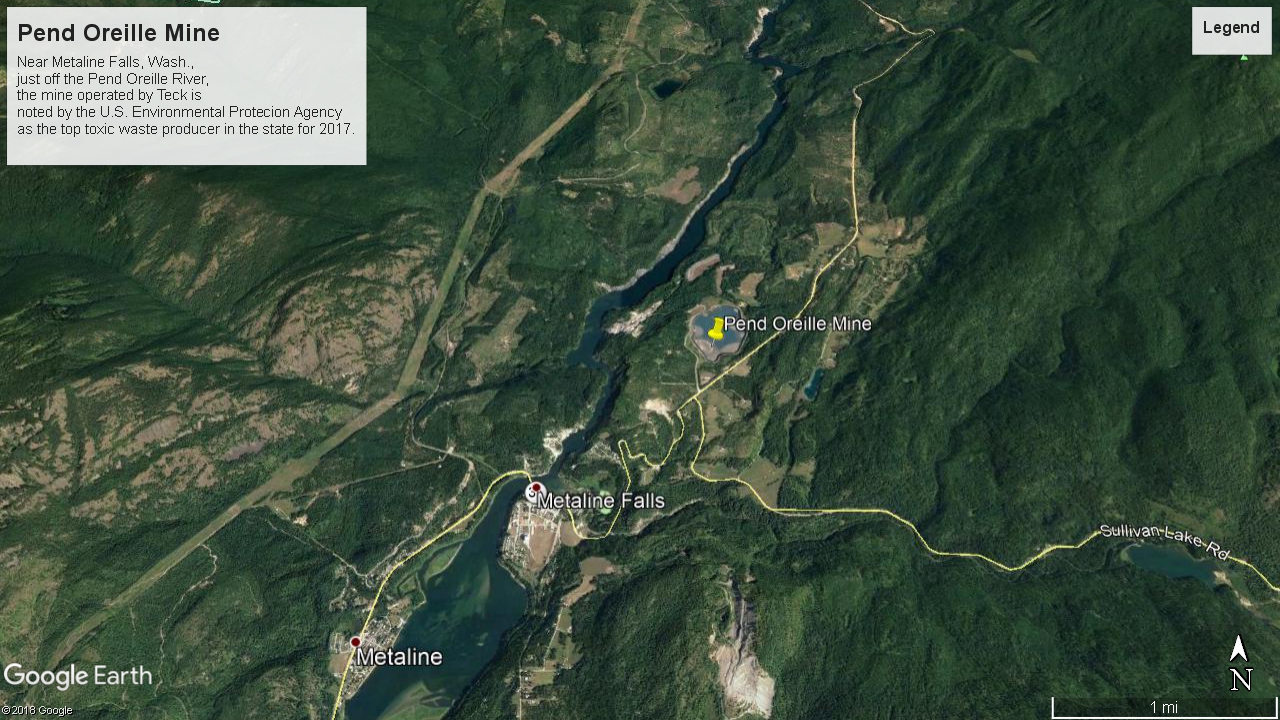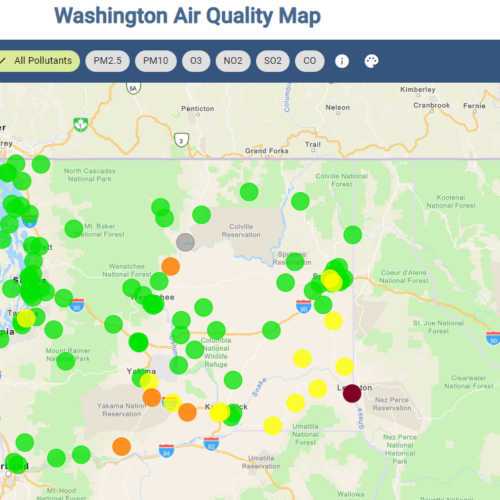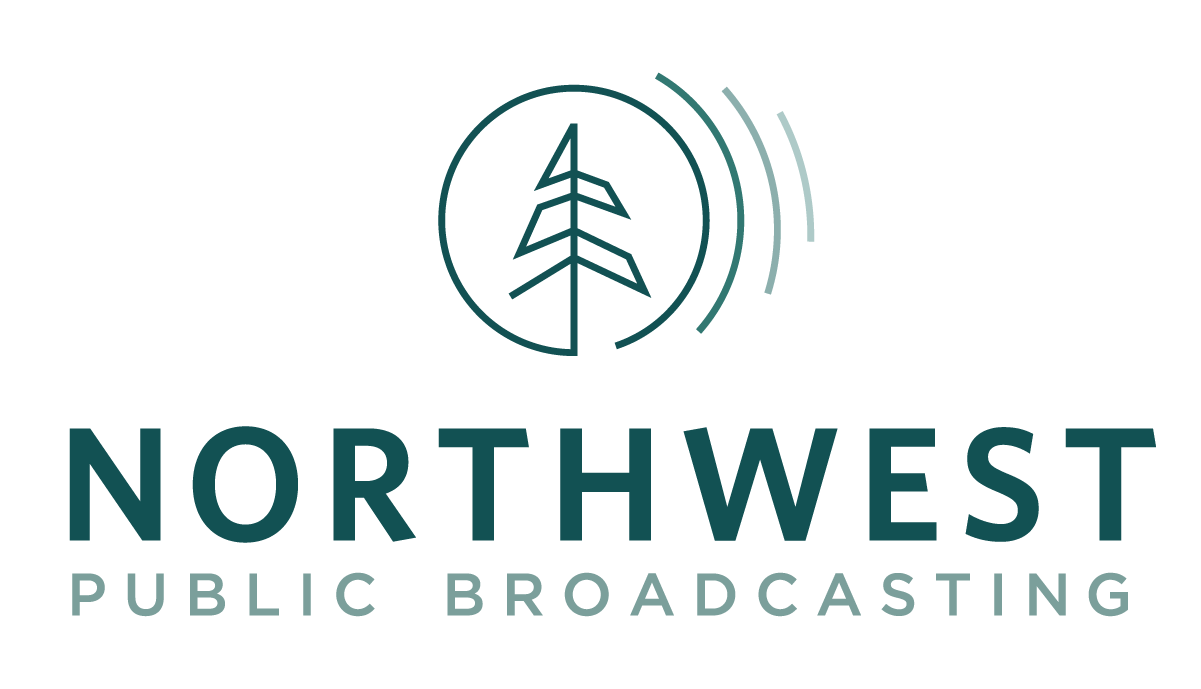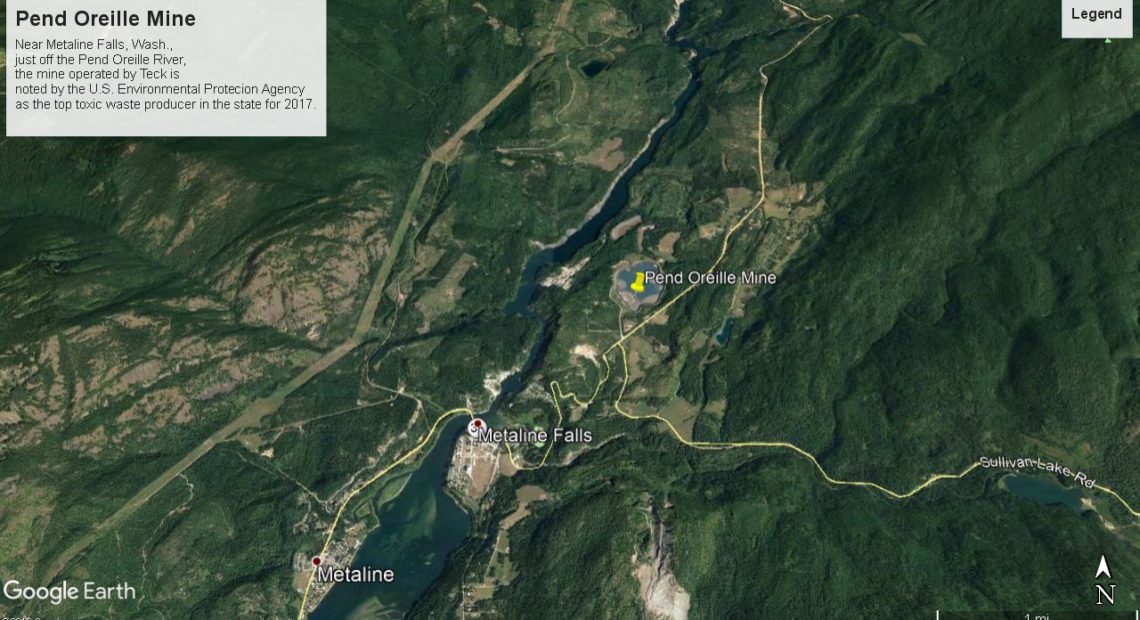
Washington’s Biggest Toxic Waste Polluter: A Mine (With Hanford Not Far Behind)
Listen
Since the late 1980s, the U.S. Environmental Protection Agency has been keeping track of big polluters through their Toxic Waste Inventory or TRI. The EPA has released their latest data for 2017.
We crunched some numbers for Washington, and here are the results.
Note that for this inventory, the EPA considers toxic waste to be chemicals or pollutants that cause cancer or chronic and acute human health effects, as well as significant adverse environmental effects.
EXPLORE THE SITES ON THE MAP
In first place is the Pend Oreille Mine operated by international mining company Teck in northeastern Washington. The federal Department of Energy takes second because of clean-up efforts at Hanford’s decommissioned nuclear plant.
Hanford’s top-two reported pollutants were toluene and lead for a combined 4.3 million pounds of waste. Toluene is used commercially as a solvent and often associated with the smell of paint thinners or glue. Lead is also a known carcinogen. Most of that waste was released on site, during a one-time release last year.
The Pend Oreille Mine produced more than double that amount with 10 million pounds of waste. Most of that was made up of lead and zinc compounds released on site.
Other major polluters included the Kettle River Operations Mill in Ferry County and the Longview Fibre Paper and Packaging operation in Cowlitz County.
Ultrayield Micronutrients in Yakima County, Agrium US Fertilizer Operation in Benton County, Cosmo Specialty Fibers in Grays Harbor County, and potato producer Lamb Weston in Benton County finished off the top-10 list. (Note: Pend Oreille and Hanford are on the list twice because they released more than one kind of toxic waste.)
Pend Oreille was the county with the most waste according to total releases based on weight. But Benton was the county with the most waste producers with three major polluters based in the area, including Hanford.
In total, various operations in Washington state produced over 32 million pounds of waste. That’s the weight of thirty A380, 300-passenger airliners.
Copyright 2018 Northwest Public Broadcasting
Related Stories:
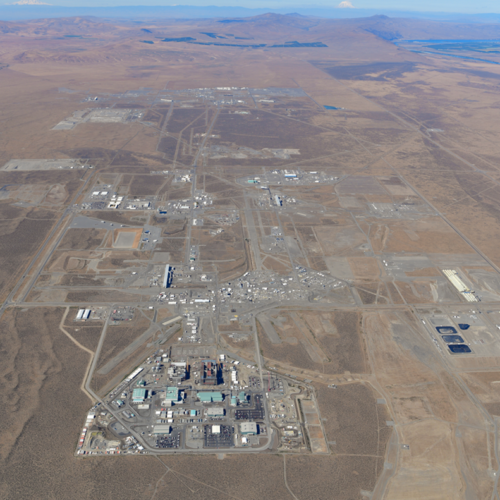
After years of negotiations, new government Hanford plan stirs up plans to treat radioactive waste
A 2021 aerial photo of Hanford’s 200 Area, which houses the tanks and under-construction Waste Treatment Plant, in southeast Washington. (Credit: U.S. Department of Energy) Listen (Runtime 1:01) Read There
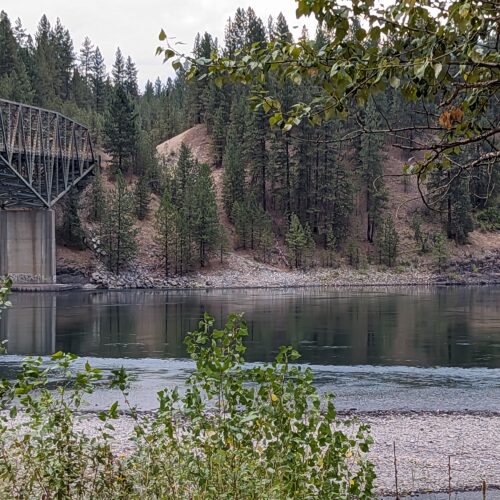
EPA Proposes adding portions of 150 mile stretch of upper Columbia River to the Superfund list
The Northport Bridge over the Columbia River in Washington state near the border with Canada. Portions of the upper Columbia River and its upland areas may be designated a Superfund
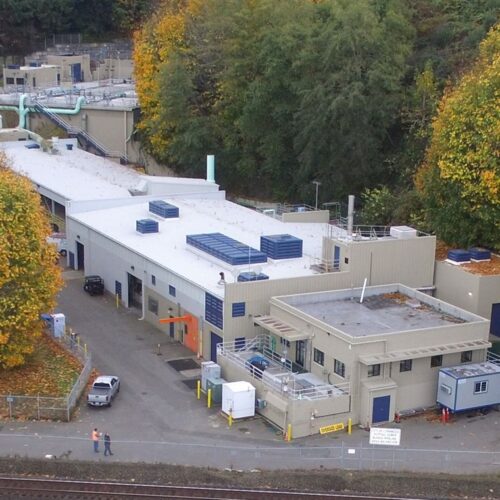
City of Lynnwood pays $550k fine to EPA for Clean Air Act violations
Processing sewage — it’s a dirty job for any city. One way governments choose to process that waste is through incineration. However, the process of burning that waste has to adhere to strict standards, including the Environmental Protection Agency’s Clean Air Act.
An aging incinerator the City of Lynnwood uses to process waste has become less efficient and beginning in 2020, fell out of compliance with those standards. Now, the city has paid a $550, 259 penalty to the EPA and will have to decommission the incinerator to comply with the standards.

